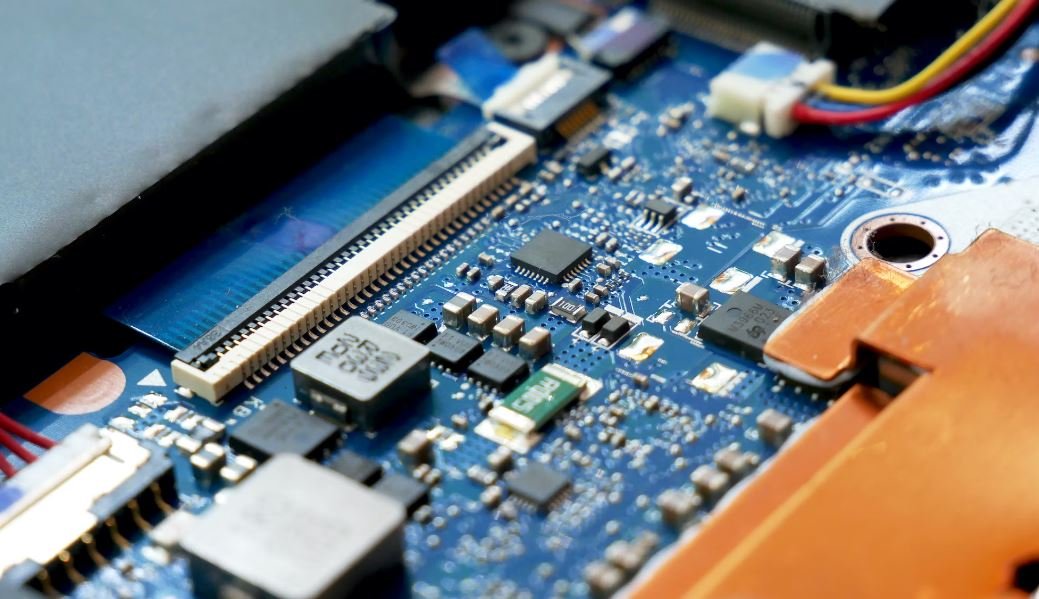Deepfake With Google Colab
Deepfake technology has rapidly gained prominence in recent years, raising concerns about the potential for misuse and its impact on various industries. With the availability of powerful machine learning tools, such as Google Colab, creating deepfakes has become more accessible to the average user. In this article, we will explore how to use Google Colab to generate deepfakes and discuss the implications of this technology.
Key Takeaways
- Deepfake technology enables the creation of AI-generated media that appears convincingly real.
- Google Colab provides a free platform for running machine learning models and creating deepfakes.
- Deepfakes have implications for privacy, misinformation, and the credibility of digital content.
Deepfake refers to the process of using machine learning algorithms to replace the face of a person in a video or image with someone else’s face, creating a realistic but fabricated version. This technology leverages deep learning techniques, such as generative adversarial networks (GANs), to generate highly authentic results. *With deepfake technology, it is now possible to make video manipulations that are almost indistinguishable from real footage, blurring the line between reality and fiction.*
While deepfakes can be created using various tools and frameworks, Google Colab offers a convenient platform for both beginners and advanced users. It provides a **free and powerful cloud-based environment** for running Python code, including machine learning models. By utilizing Google’s high-performance hardware, users can generate deepfakes more quickly and efficiently. *Google Colab‘s collaborative nature allows users to share their models and code with others, fostering a community of deepfake creators and researchers.*
Getting Started with Google Colab
- Sign in to your Google account.
- Go to https://colab.research.google.com.
- Create a new notebook or open an existing one.
- Import the necessary libraries and dependencies (e.g., TensorFlow, OpenCV).
- Load and preprocess the training data (e.g., face images, celebrity dataset).
- Train the deepfake model using GANs or other relevant architectures.
- Generate the deepfake by replacing the target face with the source face.
Table 1: Popular Libraries for Deepfake Creation
| Library | Description |
|---|---|
| TensorFlow | A popular deep learning framework with built-in tools for creating deepfakes. |
| PyTorch | An open-source machine learning library widely used in deepfake research. |
| Keras | A user-friendly deep learning framework that supports deepfake model development. |
Table 2: Ethical Considerations of Deepfake Technology
| Concerns | Implications |
|---|---|
| Privacy | Increased potential for identity theft, non-consensual sharing of intimate media, and blackmail. |
| Misinformation | Deepfakes can be used to spread fabricated information, influencing public opinion and trust. |
| Content Integrity | Deepfakes can undermine the credibility of digital media, making it harder to distinguish between real and fake. |
As the prevalence of deepfake technology rises, it is crucial to address the ethical implications surrounding its use. *One interesting approach to mitigating the negative impact of deepfakes is the development of advanced detection algorithms, utilizing techniques like image forensics and machine learning to identify manipulated content with high accuracy.* By raising awareness and deploying effective countermeasures, we can minimize potential harm and ensure the responsible use of this technology.
The availability of resources like Google Colab has contributed to the democratization of deepfake creation, allowing a wider range of users to experiment with this technology. With its powerful machine learning capabilities, Google Colab has opened doors for both creative and malicious applications of deepfakes. As deepfake technology continues to evolve, it is essential for individuals and society as a whole to remain vigilant and navigate the complex ethical landscape it presents.

Common Misconceptions
Misconception 1: Deepfakes are always used for malicious purposes
Deepfakes, which involve using artificial intelligence to manipulate or generate fake content, are often associated with negativity or harm. However, it is essential to recognize that not all deepfakes are created with malicious intent.
- Some deepfakes are created for entertainment purposes like in movies or video games.
- Deepfakes can be used in research and education to understand the extent of AI manipulation.
- Deepfakes can serve as powerful tools for satire and political commentary.
Misconception 2: Deepfakes are easily detectable and distinguishable
Many people believe that detecting deepfakes is a straightforward task. However, the reality is that advancements in deepfake technology have made it increasingly difficult to discern between genuine and manipulated content.
- Deepfake detection methods struggle to keep up with rapid advancements in deepfake generation techniques.
- Deepfakes can fool human perception, and even experts may fail to identify them accurately.
- Technologies to spot deepfakes are constantly evolving, and the arms race between creators and detectors continues.
Misconception 3: Google Colab solely promotes deepfake creation
Some people mistakenly believe that Google Colab, a cloud-based development environment, exists solely for the purpose of creating deepfakes. However, this is a misconception as Google Colab is a versatile platform that offers various functionalities beyond deepfake creation.
- Google Colab provides a free, convenient way to experiment with machine learning models, not just for deepfake generation.
- It allows users to collaborate on coding projects, run Jupyter notebooks, and access powerful hardware resources.
- Google Colab supports a wide range of AI-related applications, including natural language processing and computer vision.
Misconception 4: All deepfakes are indistinguishable from reality
While deepfakes have become increasingly convincing, it is incorrect to assume that all deepfakes are flawless and impossible to distinguish from genuine content.
- Some deepfakes exhibit subtle visual artifacts or inconsistencies that can hint at manipulation.
- In the absence of sophisticated techniques, human intuition can still help identify certain deepfakes.
- Deepfakes often struggle to replicate intricate details, such as natural eye movements or fine facial expressions.
Misconception 5: Deepfakes pose an immediate threat to society
While the emergence of deepfake technology raises concerns, it is important to avoid overestimating the immediate threat they pose to society.
- Deepfakes, at present, have limited scalability and require considerable time, expertise, and resources to create.
- There are legal and ethical frameworks in place to address the potential misuse of deepfakes, fostering responsible usage.
- The continuous advancement of detection technologies provides a means to counteract deepfake harm effectively.

The Rise of Deepfake Technology
In recent years, deepfake technology has become more widespread, allowing users to alter or manipulate audio and video content with increasingly convincing results. This has raised concerns about the potential for misuse and the impact on society. Here are 10 examples that showcase the capabilities and implications of deepfake technology:
1. Celebrity Scandals
Deepfake technology has been used to superimpose the faces of celebrities onto explicit content, creating scandalous videos that appear to be authentic. These fake videos can spread rapidly on social media, causing reputational damage and raising ethical questions about consent and privacy.
2. Political Manipulation
Deepfakes are utilized as a tool for political manipulation, enabling the creation of counterfeit videos that make politicians appear to say or do things they never did. This poses significant challenges for the authenticity of online content and the integrity of election campaigns.
3. Impersonation Attacks
With deepfake technology, individuals can convincingly mimic someone’s appearance and voice. This can lead to impersonation attacks, where criminals pretend to be someone else for fraudulent purposes, such as financial scams or blackmail.
4. Misinformation Propagation
Deepfakes can be used to disseminate false information. By creating convincing videos of public figures making misleading statements, malicious actors can manipulate public opinion and contribute to the spread of misinformation.
5. Revenge Porn
Deepfake technology facilitates the creation of explicit videos by replacing someone’s face with another person’s face. This has increased the risk of revenge porn, where private and intimate content is maliciously shared without consent.
6. Historical Reenactments
Deepfake technology can be used in historical reenactments to recreate events using realistic visuals. This can enhance education and provide viewers with a visual representation of historical events that would otherwise be inaccessible.
7. Entertainment Industry
Deepfakes have been used in the entertainment industry to bring deceased actors back to the screen or to create fictional characters with lifelike appearances. This has the potential to revolutionize filmmaking and expand creative possibilities.
8. Law Enforcement and Forensics
Deepfake technology can be a powerful tool for law enforcement and forensics. It can help reconstruct crime scenes and generate realistic simulations for training purposes, enabling investigators to gain insights and prepare for various scenarios.
9. Advertising and Marketing
Deepfakes have the potential to transform advertising and marketing campaigns by enabling companies to create realistic promotional content featuring popular celebrities without their direct involvement. This can offer unique and engaging experiences to consumers.
10. Privacy Concerns
The rise of deepfakes raises significant privacy concerns regarding the use and manipulation of personal data. As the technology becomes more accessible, it is crucial to establish regulations and safeguards to protect individuals’ privacy and prevent malicious use.
In conclusion, the rapid advancement of deepfake technology presents both opportunities and challenges across various sectors. It is essential for individuals, lawmakers, and technology developers to collaborate in order to mitigate the negative impact of deepfakes and ensure responsible usage in the future.
Frequently Asked Questions
What is deepfake technology?
Deepfake technology refers to the use of artificial intelligence to create convincing fake videos or images by
manipulating or synthesizing existing content, often replacing the original subject with someone else’s
likeness.
How does Google Colab relate to deepfake technology?
Google Colab is a cloud-based platform provided by Google that allows users to write and execute Python code in
a browser environment. It can be used for various tasks, including training deepfake models or working with
existing ones.
Can I create deepfakes using Google Colab?
Yes, you can use Google Colab to create deepfakes. It provides easy access to powerful machine learning
libraries such as TensorFlow and PyTorch, which are commonly used for deepfake generation.
Are deepfakes legal?
The legality of deepfakes varies by jurisdiction. In many places, creating and sharing deepfakes without the
consent of the individuals involved can be illegal, as they can be seen as a form of non-consensual
pornography or defamation. It is important to understand and abide by the laws in your specific region.
How can deepfake technology be used ethically?
Deepfake technology can be used in positive ways, such as in the field of entertainment or for creative
purposes. However, responsible usage involves obtaining proper consent, avoiding malicious intent, and being
transparent about the fact that the content is manipulated or synthesized.
What are the potential risks of deepfake technology?
Deepfakes have the potential to be misused for various malicious purposes, including spreading misinformation,
defamation, impersonation, and fraud. They can also pose a threat to privacy and undermine trust in media.
How can I detect deepfakes?
As deepfake technology evolves, so do the methods for detecting them. There are various techniques and tools
available, including analyzing facial inconsistencies, examining artifacts, and using machine learning
algorithms designed for deepfake detection.
What can I do if I find myself targeted by a deepfake?
If you believe you are a victim of deepfake misuse, it is important to gather evidence, report the situation
to law enforcement, and seek legal advice. Platforms and social media networks may also have mechanisms for
reporting and removing deepfake content.
Where can I find more resources on deepfake technology?
There are numerous online resources and communities dedicated to deepfake technology. Examples include forums,
research papers, tutorials, and educational platforms that cover various aspects of deepfake creation,
detection, and ethical considerations.
Can deepfake technology be regulated?
Regulating deepfake technology is a complex task that involves balancing free speech, privacy concerns, and
potential harm. Governments and organizations worldwide are actively exploring legislative solutions to
address the challenges posed by deepfakes.




